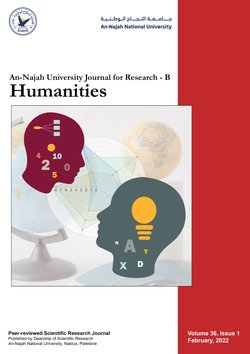The Settlement Patterns during the Early Bronze Age in Palestine
Authors:
Article info
2003-07-26
2004-04-25
2004-04-25
483 - 512
Keywords
Abstract
The analysis of the distribution of resident areas and therefore identifying its roles based on archaeological field works in the sites which go back to the Bronze Age in the land of Canaanite leads to the recognition of the economic, social and political characteristics of the civilization of that era which extends from 3400 - 2000 BC. Most of the settlements were established during the first stage of that Age, which can be described as farm villages, in fertile areas. Their villages were relatively small communities and without any significant political system. By the end of that stage and the beginning of the next one (EBII), the plains of residential centers were expanded and the population increased. This led to establishment of fortified city-states which constituted unstable political centers during the second and third stages. That was because of civil war which broke out among their military forces. Upon the termination of any political system, the victorious would redivide the sovereignty areas. Despite the state of enemity among the states governors and city mayors, the land of Canaan reached a high stage of prosperity. However, the Land of Canaan suffered at the end of EBIII from hardships which resulted in the destruction of the cities along with their political system. As a result, the number of inhabited areas decreased and a new life style of pastoral economy and modest architecture prevailed.
Al-Houdalieh, S. (2004). The Settlement Patterns during the Early Bronze Age in Palestine. An-Najah University Journal for Research - B (Humanities), 18(2), 483–512. https://doi.org/10.35552/0247-018-002-005
[1]S. Al-Houdalieh, “The Settlement Patterns during the Early Bronze Age in Palestine,” An-Najah University Journal for Research - B (Humanities), vol. 18, no. 2, pp. 483–512, Apr. 2004, doi: 10.35552/0247-018-002-005.
Al-Houdalieh, Salah. “The Settlement Patterns during the Early Bronze Age in Palestine.” An-Najah University Journal for Research - B (Humanities), vol. 18, no. 2, Apr. 2004, pp. 483–512. Crossref, https://doi.org/10.35552/0247-018-002-005.
1.Al-Houdalieh S. The Settlement Patterns during the Early Bronze Age in Palestine. An-Najah University Journal for Research - B (Humanities) [Internet]. 2004 Apr;18(2):483–512. Available from: http://dx.doi.org/10.35552/0247-018-002-005
Al-Houdalieh, Salah. “The Settlement Patterns during the Early Bronze Age in Palestine.” An-Najah University Journal for Research - B (Humanities) 18, no. 2 (April 2004): 483–512. https://doi.org/10.35552/0247-018-002-005.
The Settlement Patterns during the Early Bronze Age in Palestine
المؤلفون:
معلومات المقال
2003-07-26
2004-04-25
2004-04-25
483 - 512
الكلمات الإفتتاحية
الملخص
The analysis of the distribution of resident areas and therefore identifying its roles based on archaeological field works in the sites which go back to the Bronze Age in the land of Canaanite leads to the recognition of the economic, social and political characteristics of the civilization of that era which extends from 3400 - 2000 BC. Most of the settlements were established during the first stage of that Age, which can be described as farm villages, in fertile areas. Their villages were relatively small communities and without any significant political system. By the end of that stage and the beginning of the next one (EBII), the plains of residential centers were expanded and the population increased. This led to establishment of fortified city-states which constituted unstable political centers during the second and third stages. That was because of civil war which broke out among their military forces. Upon the termination of any political system, the victorious would redivide the sovereignty areas. Despite the state of enemity among the states governors and city mayors, the land of Canaan reached a high stage of prosperity. However, the Land of Canaan suffered at the end of EBIII from hardships which resulted in the destruction of the cities along with their political system. As a result, the number of inhabited areas decreased and a new life style of pastoral economy and modest architecture prevailed.
Al-Houdalieh, S. (2004). The Settlement Patterns during the Early Bronze Age in Palestine. An-Najah University Journal for Research - B (Humanities), 18(2), 483–512. https://doi.org/10.35552/0247-018-002-005
[1]S. Al-Houdalieh, “The Settlement Patterns during the Early Bronze Age in Palestine,” An-Najah University Journal for Research - B (Humanities), vol. 18, no. 2, pp. 483–512, Apr. 2004, doi: 10.35552/0247-018-002-005.
Al-Houdalieh, Salah. “The Settlement Patterns during the Early Bronze Age in Palestine.” An-Najah University Journal for Research - B (Humanities), vol. 18, no. 2, Apr. 2004, pp. 483–512. Crossref, https://doi.org/10.35552/0247-018-002-005.
1.Al-Houdalieh S. The Settlement Patterns during the Early Bronze Age in Palestine. An-Najah University Journal for Research - B (Humanities) [Internet]. 2004 Apr;18(2):483–512. Available from: http://dx.doi.org/10.35552/0247-018-002-005
Al-Houdalieh, Salah. “The Settlement Patterns during the Early Bronze Age in Palestine.” An-Najah University Journal for Research - B (Humanities) 18, no. 2 (April 2004): 483–512. https://doi.org/10.35552/0247-018-002-005.

Since 2019
Cite Score (Scopus): 0.5
Time to First Decision: 7 Days
Submission to Acceptance: 60 Days
Acceptance to Publication: 10 Days
Acceptance Rate: 20%
Call for Papers:
Special Issue on
Innovative Assessment in the Age of AI: Strategies for Quality
Why should you
Publish With Us?
An-Najah National University
Nablus, Palestine
Nablus, Palestine
- P.O. Box
- 7, 707
- Fax
- (970)(9)2345982
- Tel.
- (970)(9)2345560
- (970)(9)2345113/5/6/7-Ext. 2628
- [email protected]
- EIC
- Prof. Waleed Sweileh
